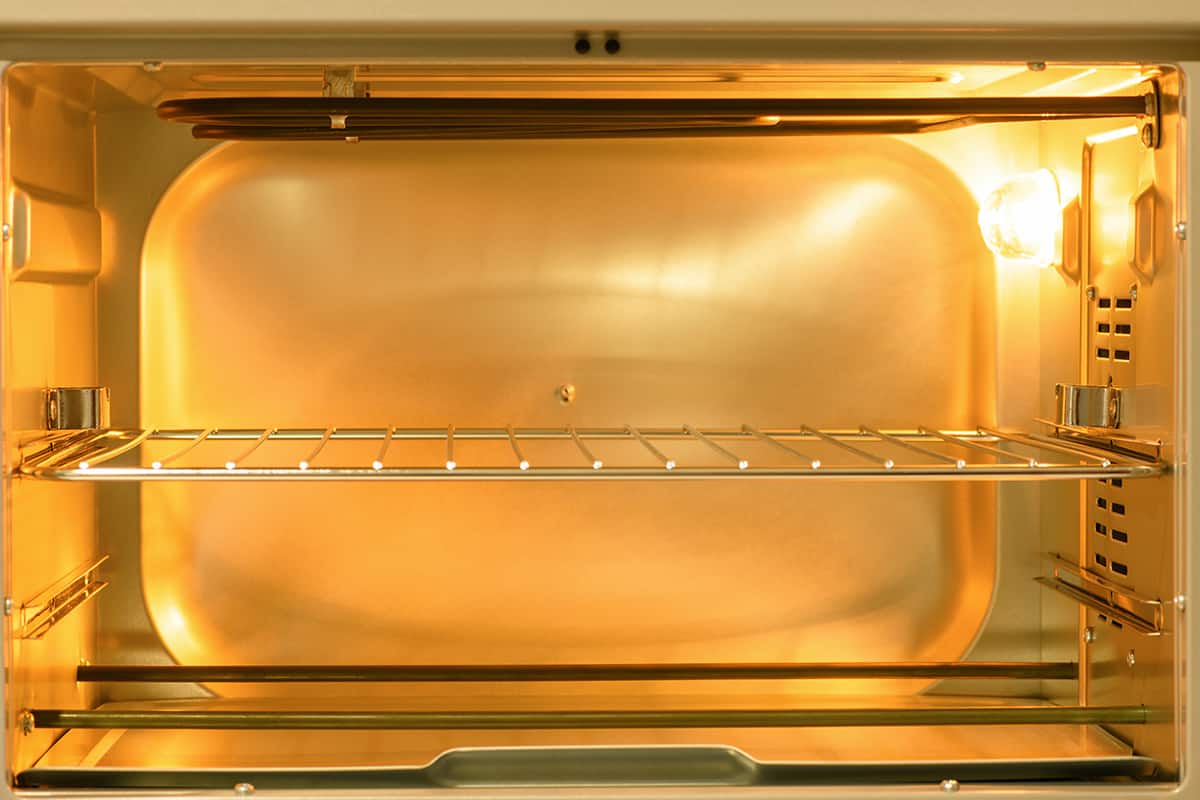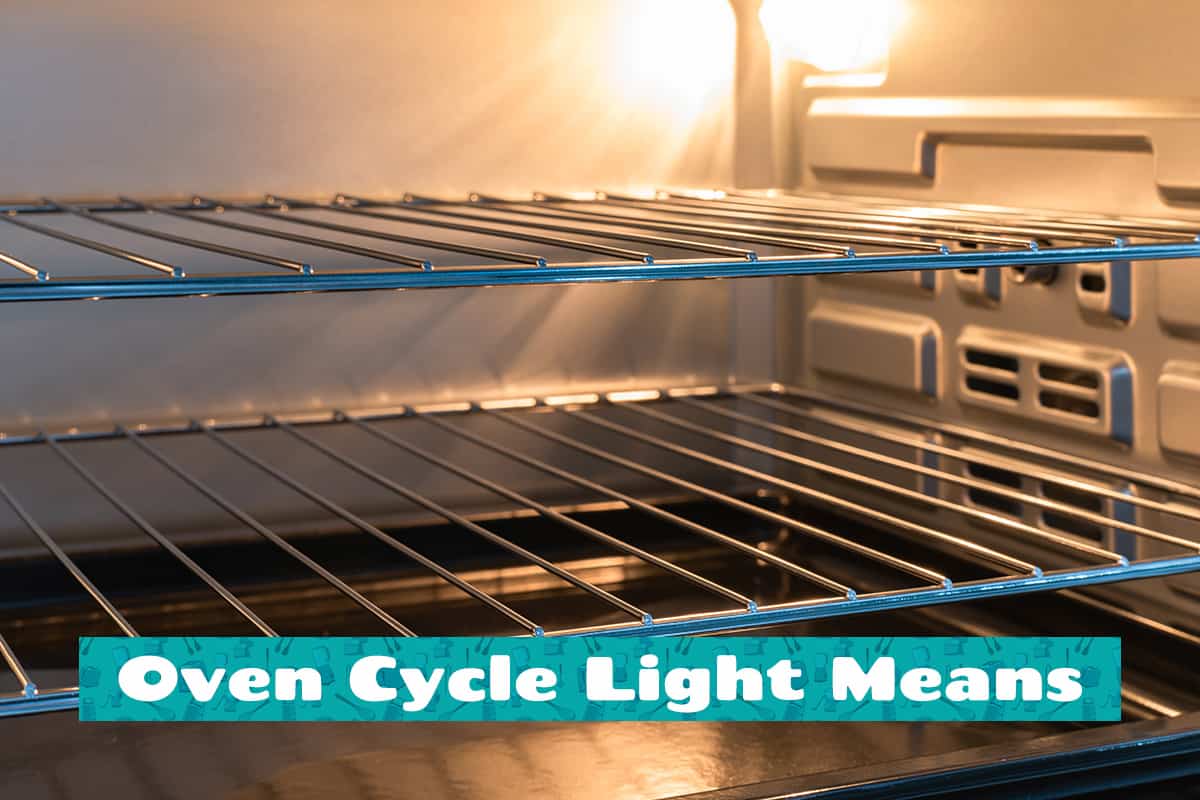Ovens have allowed us to bake, roast, and broil with ease. Their design has evolved over the years, incorporating numerous features to enhance the cooking experience. One such feature that usually slips under our radars is the oven cycle light.
The oven cycle light indicates the oven’s heating status. When it’s on, the oven is actively heating. When it’s off, the desired temperature has been reached. Blinking can signify mid-cycle adjustments or potential issues.
This guide will cover the ins and outs of the oven cycle light, from what the different blinking patterns mean to how you can get the most out of this small yet highly crucial feature.
The Basics of Oven Cycle Lights

Ovens, the trusted appliances in our kitchens, have come a long way from their primitive counterparts. Today, they’re equipped with advanced features, with the oven cycle light standing out as a silent guide to the heating process.
The Role of Oven Cycle Lights in Cooking
Oven cycle lights act as indicators that provide real-time feedback about the oven’s heating cycle. Think of it as a traffic light for your oven—it guides you on when to pop in your dish and when to wait. When you set your oven to a specific temperature, the heating elements activate to reach that temperature. The light shines during this heating phase. Once the oven attains the preset temperature, the light goes off, signaling that it’s time to bake or roast.
Where to Find the Cycle Light
In most ovens, the cycle light is situated on the control panel, often next to the temperature settings or timer. It’s usually a small LED or bulb, shining brightly when on. On some models, especially older ones, it might be labeled as “preheat” or “heating.” In newer digital ovens, the light might be accompanied by a display message.
Different Types of Oven Cycle Lights
The oven cycle light has seen various modifications and adaptations to fit different oven designs and functionalities.
Standard Ovens vs. Convection Ovens
- Standard Ovens: Most homeowners are familiar with standard or conventional ovens. These ovens have heating elements usually located at the bottom (for baking) and top (for broiling). In such ovens, the cycle light typically remains on during the preheating phase and turns off once the set temperature is achieved. The simplicity of these lights matches the straightforward function of standard ovens.
- Convection Ovens: A step up from the conventional type, convection ovens come with a fan that circulates hot air for even cooking. The cycle light in these ovens often works in tandem with the fan. Not only does it indicate the preheating status, but it might also signal when the fan is in operation. Some advanced models might even have separate lights for heating and fan activity, offering a clearer picture of the oven’s current mode.
Modern Ovens
With the digital age in full swing, many ovens now come equipped with touchscreen panels and digital displays. Here’s how cycle lights function in these advanced models:
- Touchscreen Panels: These sleek ovens replace traditional knobs with touch-sensitive controls. The oven cycle light might be represented digitally, possibly with animated icons. For instance, a rising thermometer icon could indicate the preheating phase, while a steady one might mean the oven has reached the desired temperature.
- Digital Indicators: Some ovens offer a numeric readout of the current oven temperature alongside the set one. The cycle light, in such cases, could be a color-coded system. A red light might mean the oven is still heating, while green could signal it’s ready. This color coding offers a quick and intuitive way to gauge the oven’s status.
- Multi-Function Lights: High-end ovens might come with lights that serve dual purposes. Apart from the heating status, these lights might flash in patterns to indicate specific issues or needs, like a door left ajar or a filter that needs replacement.
Deciphering Oven Cycle Light Signals

The oven cycle light communicates the appliance’s current state. The blinking pattern of the light will indicate the oven’s temperature status.
The Constant On Light: Preheating Phase
When you set your oven to a specific temperature and turn it on, the heating elements spring into action. During this phase, the oven cycle light remains steadily lit. This is a clear sign that the oven is still in the preheating stage, working to reach the temperature you’ve set. Wait until this light goes off before placing your food inside for consistent cooking outcomes.
Blinking Lights: Mid-Cycle Temperature Adjustments
Occasionally, you might notice the oven cycle light blinking, especially if you’ve altered the temperature setting midway. This blinking is the oven’s way of indicating that it’s adjusting to a new temperature. For instance, if you’ve reduced the heat from 400°F to 350°F, the oven might cool down, with the light blinking to show this adjustment phase.
Fading In and Out: Maintaining the Set Temperature
Once the oven reaches the desired temperature, it doesn’t just stay there automatically. The heating elements turn on and off to maintain that temperature. When the light fades in and out, rather than a sharp on-off switch, it’s a sign that the oven is working to sustain the set temperature.
Quick Flashes: Potential Error or Issue
Modern ovens come equipped with sensors and systems to detect irregularities. If there’s a sudden rapid flashing of the oven cycle light, it could be an alert. Possible reasons might include an oven door not closing properly, a malfunctioning sensor, or other issues that might need attention.
Making the Most of Your Oven’s Cycle Light
Now that we have a good grasp of what the oven cycle light means let’s learn about how we can use this feature to our advantage in the kitchen.
Ensuring Optimal Visibility of the Cycle Light
A well-lit oven cycle light makes it easier to monitor the oven’s status. Over time, the light may dim or get obscured by dirt or grease. Regularly cleaning the area around the light and replacing a dimming bulb or LED can keep the signal bright and discernible.
Periodic Maintenance Checks to Keep Light Accuracy
Like any other feature, the oven cycle light benefits from periodic checks. Occasionally testing the oven’s heating accuracy with an oven thermometer can validate if the light-off moment truly aligns with the oven reaching the desired temperature.
Pairing the Cycle Light with Timer Functions
While the oven cycle light provides information about heating phases, coupling it with the oven’s timer can enhance precision. For instance, if a recipe requires baking for 30 minutes once the oven reaches 375°F, start the timer when the light goes off. This combination can lead to consistently great results.
Understanding Variations Across Different Oven Types
As ovens vary in design and technology, so do their cycle lights. Familiarizing yourself with the specific signals of your oven model can optimize usage. For instance, convection ovens might have additional lights or signals indicating fan operations. Referring to the user manual or even online forums can help you figure out the ins and outs of your specific oven model.
Being Mindful of External Factors Affecting Heating
Even though the oven cycle light indicates the internal heating status, external factors can influence cooking. Room temperature, altitude, or even the type of bakeware can affect cooking times.
FAQs
1. Can I replace the cycle light if it’s not working?
Yes, you can replace the oven cycle light if it’s not working. Depending on your oven model, you might be able to do it yourself or you may need assistance from a technician. Check your oven’s manual for guidance.
2. Are there any smart ovens that provide more detailed information than just a cycle light?
There are smart ovens available that offer more than just a basic cycle light. These ovens come equipped with digital displays that provide real-time temperature readings and might even have smartphone integration for remote monitoring and adjustments. They often provide detailed feedback on the oven’s status to make cooking even more precise.



